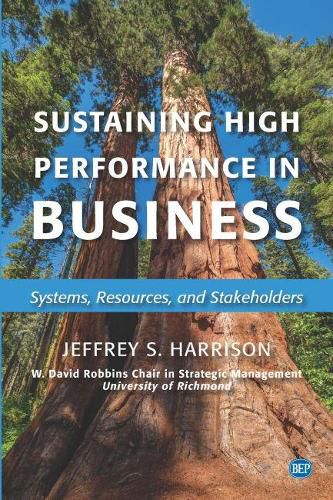Readings Newsletter
Become a Readings Member to make your shopping experience even easier.
Sign in or sign up for free!
You’re not far away from qualifying for FREE standard shipping within Australia
You’ve qualified for FREE standard shipping within Australia
The cart is loading…






This title is printed to order. This book may have been self-published. If so, we cannot guarantee the quality of the content. In the main most books will have gone through the editing process however some may not. We therefore suggest that you be aware of this before ordering this book. If in doubt check either the author or publisher’s details as we are unable to accept any returns unless they are faulty. Please contact us if you have any questions.
Many books and articles have been written about how firms can achieve and sustain high performance. They typically focus on a particular aspect of the firm such as its culture, resources, leadership, ability to learn, human resources practices, or communications systems. Often the very firms that are used as examples of high performance are no longer high performing even a few years later.
In contrast, this book asserts that it is the efficiency and effectiveness of a firm’s entire value creating system that determines its performance over the long term. Systems theory is used as an integrative mechanism to combine the best ideas from industrial organization economics, the resource-based perspective, and stakeholder theory.
Based on this theoretical foundation, tools are provided for conducting in-depth, detailed analyses of each part of a firm’s value creation system and its effectiveness in contributing to the total stakeholder value created by the firm. Systems assessment based on this information then leads to the development of strategies, including specific initiatives for overcoming weaknesses in the system and for creating new value for stakeholders. The book also provides guidance for developing detailed plans and a strategic control system to make sure strategies and initiatives are implemented. An underlying theme is that the purpose of a firm is to create value for its stakeholders: customers, employees, shareholders, suppliers, and the communities in which the firm operates. This book provides a concise, yet complete guide for strategic management.
$9.00 standard shipping within Australia
FREE standard shipping within Australia for orders over $100.00
Express & International shipping calculated at checkout
This title is printed to order. This book may have been self-published. If so, we cannot guarantee the quality of the content. In the main most books will have gone through the editing process however some may not. We therefore suggest that you be aware of this before ordering this book. If in doubt check either the author or publisher’s details as we are unable to accept any returns unless they are faulty. Please contact us if you have any questions.
Many books and articles have been written about how firms can achieve and sustain high performance. They typically focus on a particular aspect of the firm such as its culture, resources, leadership, ability to learn, human resources practices, or communications systems. Often the very firms that are used as examples of high performance are no longer high performing even a few years later.
In contrast, this book asserts that it is the efficiency and effectiveness of a firm’s entire value creating system that determines its performance over the long term. Systems theory is used as an integrative mechanism to combine the best ideas from industrial organization economics, the resource-based perspective, and stakeholder theory.
Based on this theoretical foundation, tools are provided for conducting in-depth, detailed analyses of each part of a firm’s value creation system and its effectiveness in contributing to the total stakeholder value created by the firm. Systems assessment based on this information then leads to the development of strategies, including specific initiatives for overcoming weaknesses in the system and for creating new value for stakeholders. The book also provides guidance for developing detailed plans and a strategic control system to make sure strategies and initiatives are implemented. An underlying theme is that the purpose of a firm is to create value for its stakeholders: customers, employees, shareholders, suppliers, and the communities in which the firm operates. This book provides a concise, yet complete guide for strategic management.